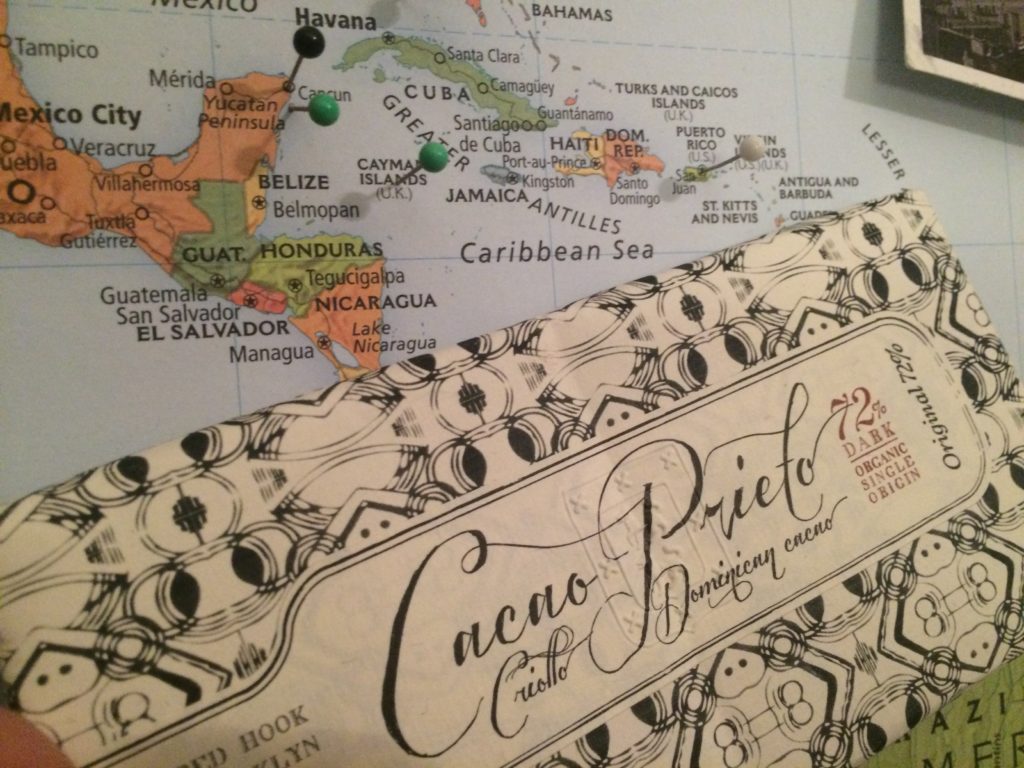
As we traipsed through the forest, following our guide, my mind was on my exposed arms and the potential for mosquito bites. It was too hot to wear long sleeves, so I was distracted until I saw the brightly colored, football-shaped items dangling in odd spots from trees.
There didn’t seem to be any sort of pattern. Some came from the base while others sprouted from the joints between branches. The guide took a machete, pulled one off, and hacked it in half. He handed each of us a piece of the fruit, a white, pulpy substance that had a hard seed inside.
The cacao fruit comes in shades of red, yellow, and purple, and size and color are not indicators of ripeness. The fruit’s flavor reminded me of many of the ones I’d had in Southeast Asia, specifically the mangosteen and lychee. Trees produce the fruits year-round in some parts of the world, including the Dominican Republic, where I spent a few days over the course of two trips.
I first learned about the fruit in Yamasa, a short drive from Santo Domingo. After seeing how the fruit grew, we visited Conacado, a processing plant and collective nearby that takes the beans from the fruit, ferments the beans in the surrounding pulp, and roast them to bring out the flavors.

The now cocoa beans sit out to dry, where they now taste bitter and start to resemble the beloved product. They might also be roasted over a wood fire for added flavor. Husks are removed so that later they can be crushed into a paste and melted down to create hot chocolate or baked into bread.
Cocoa nibs are added to cocoa butter along with the chocolatier’s personal selection of ingredients, which might include milk or sugar. It’s then formed into bars and sold to people like us to enjoy! For more on the chocolate making process, see this extensive article on Ecole Chocolat.
The modern chocolate industry in the Dominican Republic has made a move towards more organic and hands-off practices. Our guide shared a story about a farm that was left to its own devices for a decade and continued to grow cacao in the meantime.
This is part of how the country has become the world’s largest supplier of cocoa beans. I highly recommend testing out Dominican chocolate, especially dark chocolate bars, which I did for the sake of research, of course.
Conacado’s beans are certified fair trade and USDA organic. Cacao Prieto, pictured above, is a single origin chocolate manufacturer from the Dominican Republic that produces it in the Red Hook neighborhood of Brooklyn.
Chocal is located in nearby Puerto Plata and supports the community through their production efforts. The collective is owned by local women, which allows them to provide for their families. Travelers with Fathom can volunteer with them.
Have you ever tried chocolate from the Dominican Republic?
I visited the farm and roasting facility with Tequia Experiences as a part of a press trip with the Dominican Republic Ministry of Tourism and BVK.

Very interesting. We all love chocolate, but we don’t really know anything about it. I think I have tasted chocolate from the Dominican Republic by way of Trader Joe’s, but I’m sure it wasn’t like what you had at the source. Great experience.